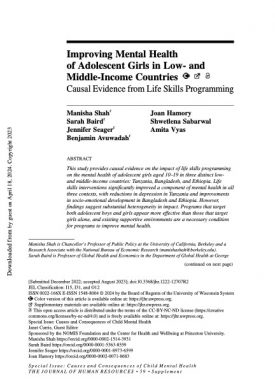This report highlights that in order to eradicate child exploitation, we must take a dual pronged approach that uses a broad lens, to identify and challenge child and adolescent exploitation in all its forms, while systematically disaggregating its underlying causes and effects by gender, age, disability and other indicators of social exclusion.
Beginning with the ways in which child exploitation has been framed, in the Sustainable Development Goals and by international conventions – especially those on child labour – the report then discusses the magnitude and patterning of child labour today. It notes that while boys appear to be more vulnerable than girls, this is in large part because the work that girls do is largely invisible and uncounted. It also notes that girls are especially vulnerable to trafficking and almost uniquely vulnerable to forced marriage, now conceptualised as a form of modern slavery.
The second half of the paper looks at promising entry points to tackle adolescent labour and exploitation. These range from working with the private sector to ensure that young workers are adequately protected to targeted programmes that focus on particularly vulnerable populations, such as domestic workers. We conclude with policy and practice recommendations.
Suggested citation
Presler-Marshall, E. and Jones, N. (2018) The devil is in the detail: why a gender-and adolescent-specific lens is essential to accelerate progress in eradicating child exploitation. London: Gender and Adolescence: Global Evidence.


